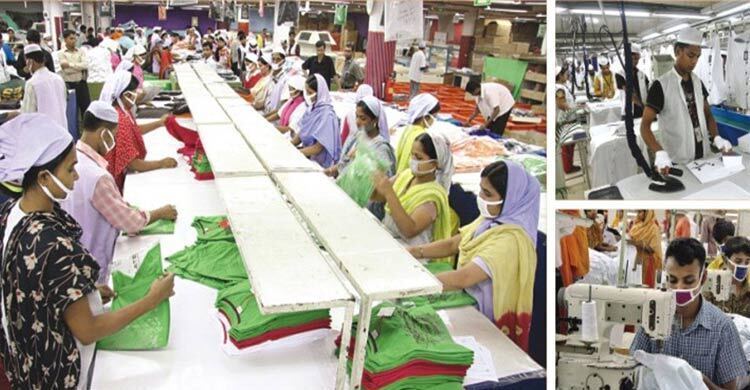India takes aim at Bangladesh's apparel dominance

The ongoing turmoil in Bangladesh presents a potential growth opportunity for India's textile industry, as experts and Indian textile companies assess the situation.
Bangladesh, the world’s second-largest textile exporter after China, is facing significant challenges that could hinder its position in the global market.
However, the potential shift to India won't be straightforward, analyses the Mint, an Indian business and financial newspaper published by HT Media that also owns the Hindustan Times.
According to Mint, India will need to increase its capacity and compete with other nations in the "Bangladesh-plus-one" strategy, where companies seek to diversify their manufacturing bases beyond Bangladesh.
Data from EximPedia shows that the global clothing industry was valued at over $1.5 trillion in 2022, with China leading at $182 billion in exports. Bangladesh followed with $45 billion, while India ranked fifth at $18 billion, behind Vietnam and Turkey.
"The situation in Bangladesh presents a promising medium-term opportunity for India’s garment sector, as global brands might look to diversify from Bangladesh," said Kulin Lalbhai, vice chairman of Arvind Ltd.
Bharat Birla, director at Anand Rathi Investment Banking, believes that if the crisis in Bangladesh continues, India could see a 10-15% increase in garment exports in the short to medium term. Gokaldas Exports Ltd, an apparel manufacturer, also noted in its June quarter investor presentation that buyers are looking for alternative production bases outside China, creating opportunities for major Asian suppliers like India.
Prerna Jhunjhunwala, vice president and research analyst for textiles and retail at Elara Capital, cautioned that while global customers may not fully replace Bangladesh or find immediate alternative capacity, they may still seek other options to avoid further dependence on a nation in crisis.
This potential shift could spark growth in Indian cities with strong textile manufacturing hubs, such as Surat, Tiruppur, Ilkal, and Chanderi, which are well-positioned to absorb displaced orders due to their deep-rooted expertise in the textile industry.
Amit Agarwal, chief financial officer of Raymond, highlighted India's stability as a factor that could attract global brands. "Previously, global brands had our fabric sent to Bangladesh for stitching. So now a portion of that can easily come to us very quickly," Agarwal said.
However, the big question remains: Can India replace Bangladesh? Industry participants believe that India will need to invest in expanding its garment manufacturing capabilities to capitalize on the turmoil in Bangladesh. Measures such as a potential free trade agreement (FTA) with Europe and production-linked incentives for cotton-based garments could accelerate this expansion.
Setting up new facilities and scaling up to meet global demand could take three to five years, making it challenging for India to achieve an immediate boost in capacity. Additionally, increasing capacity might result in higher production costs.
Despite these challenges, there is a belief that if Bangladesh's issues persist, India could benefit by adding capacity, leading to long-term gains as customers diversify away from Bangladesh.
"It is our belief that the situation in Bangladesh is not expected to normalize for at least six to eight months until the next general elections," said Birla of Anand Rathi Investment Banking. Jhunjhunwala of Elara Capital added that while India could enhance its market share, global companies may also explore near-shoring options in Latin America and Mexico, as well as other Asian suppliers like Vietnam, Cambodia, Sri Lanka, and Indonesia.
India-Bangladesh trade ties
India maintains substantial trade ties with Bangladesh, particularly in textiles and apparel, both as an importer and exporter. However, India's exports to Bangladesh fell by 9.41% from $12.21 billion in FY23 to $11.06 billion in FY24, while imports also dropped by 8.73% during the same period.
Bangladesh has become a key manufacturing hub for many Indian textile firms. The ongoing uncertainties in Bangladesh might lead Indian companies operating there to face production slowdowns or shortages, pushing them to explore alternative manufacturing options.
Indian yarn and fabric suppliers to Bangladesh may also face short-term payment delays due to the turmoil, according to Jhunjhunwala of Elara Capital. Neeraj Jain, joint managing director of Vardhman Textiles Ltd, noted that while there is no immediate impact on demand, prolonged instability in Bangladesh could become a concern.

